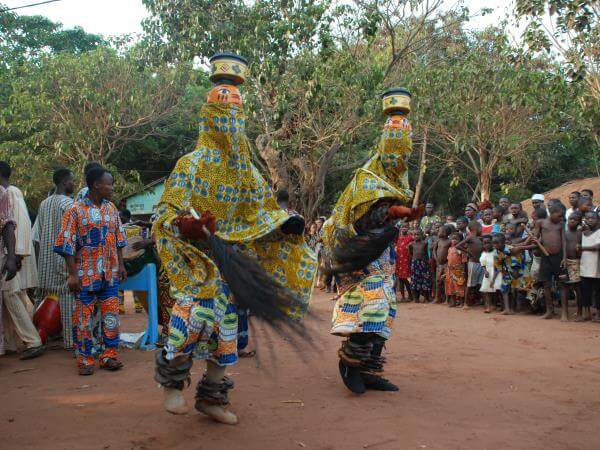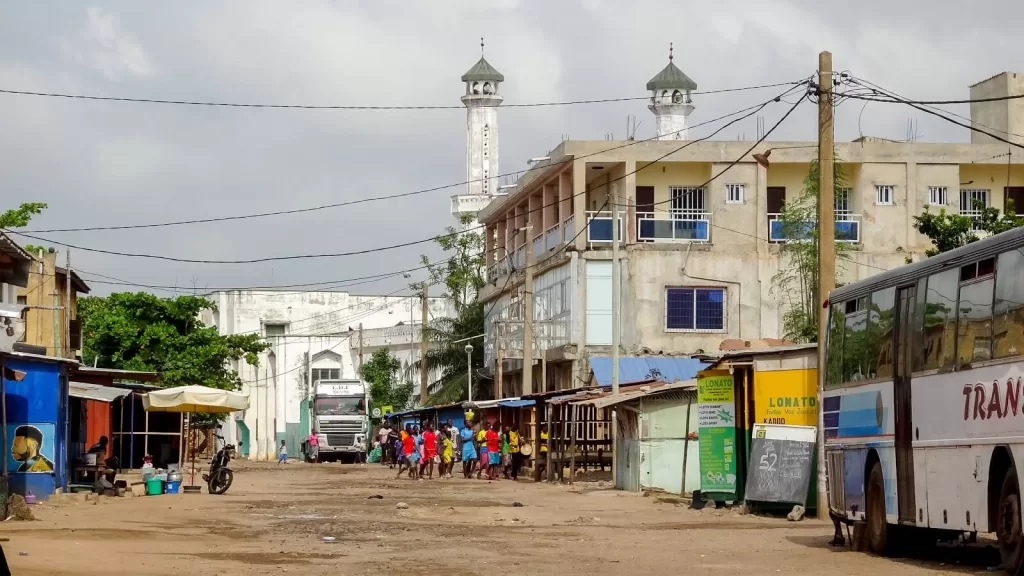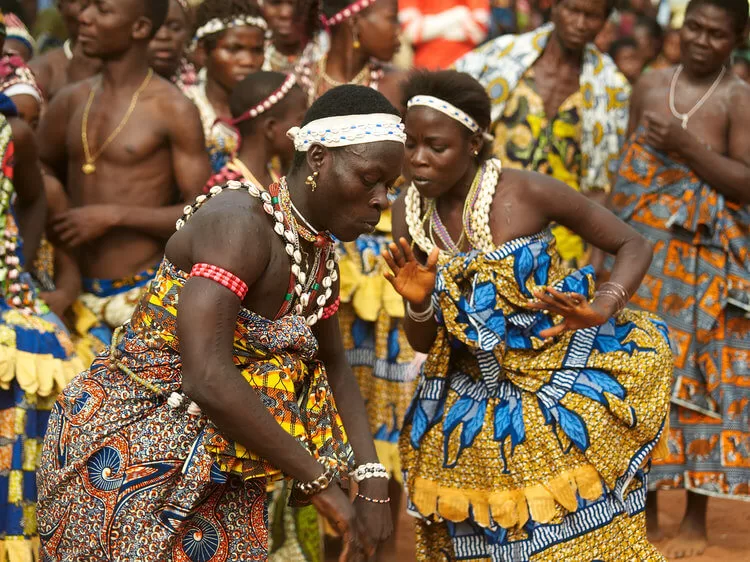6 Best Reasons To Visit Togo
Welcome to West Africa’s smallest and most interesting country, Togo. There are 6 best reasons to visit Togo.
Togo is renowned for its stunning beaches, warm and welcoming people, and vibrant culture.
Even though it is very small, it has a lot of different things to do, from hiking in the woods and national parks to visiting markets and historical sites.
Togo’s capital city, Lomé, is a bustling center of markets, architecture, and nightlife.
There are several museums in the country, including the National Museum which tells the story of Togo’s history and culture.
The Fetish Market provides an interesting insight into traditional African customs and practices.
Togo has so much more to offer than just Lomé. One of the country’s most picturesque towns, kpalimé in the central part of Togo, is renowned for its stunning scenery, waterfalls, and hiking trails.
Togoville is located on the shores of Lake Togo and is a popular tourist destination for Togolese culture and tradition.
Togo is home to several national parks, some of which are particularly popular with nature lovers, such as Fazao – Fazao-Mfalakassa National Park and the Kéran National Park.
These parks are home to a variety of wildlife, from elephants and hippos to monkeys and other primates.
Togolese beaches, especially Aného Beach and Baguida Beach, are also popular with tourists looking for sun, sand, and relaxation.
Whether you want to discover the culture of Togo or take in the beauty of this West African country, there is something for everyone.
So get ready for an adventure like no other in Togo!
What are the Best Reasons To Visit Togo?
Here are the best reasons to visit Togo:
- The best time to visit
- Visa and vaccinations
- Getting around
- Attractions
- Culture
- Safety
Best Time to Visit

Photo Credit; Responsible-Travel
The dry season in Togo is from November to April, making it the best time to visit.
Sunny and dry weather is common during this period, making it an ideal time to visit Togo’s beaches, cultural sites, and natural attractions.
During this time, temperatures are also lower, making it easier to get outside and enjoy the outdoors.
Togo’s rainy season is from May to October. The rainy season begins in July and ends in August.
During this time, the landscape is lush and green, but heavy rains can make it difficult to navigate the roads, and some tourist spots may close.
However, if you’re keen on bird watching or want to experience the country’s cascades and rivers to their fullest, then the rainy season is still a great time to visit.
The dry season in Togo is the most popular tourist season because of the weather and the tourist activities available.
However, you can still see and enjoy the country all year round.
Visa and Vaccinations

Photo Credit: Unsdg.org
The majority of visitors to Togo are visa-exempt, except for nationals of certain African and Asian nations.
You can apply for a visa at an embassy or consulate in Togolese territory before your trip or, in some cases, upon your arrival at the border.
It is best to apply for a visa before your trip to avoid any complications.
As far as vaccination is concerned, yellow fever is an endemic disease in Togo, which is why the World Health Organization (WHO) advises all travelers to the country to get vaccinated.
Depending on the traveler’s medical history and activities planned, additional vaccines may be recommended, including hepatitis A and hepatitis B vaccines, typhoid vaccines, and mumps vaccines.
It is recommended to speak to a travel health professional or healthcare professional at least 4-6 weeks before your trip to discuss vaccinations and medications.
It is also wise to avoid mosquito bites as Togo is prone to malaria, Dengue fever, and the Zika virus.
It can include using mosquito repellent, wearing long-sleeved clothing, and sleeping under mosquito nets.
Other common infections in Togo can also be avoided by drinking bottled water or filtered water and maintaining good hygiene.
Getting Around

Photo Credit: Travelsvenue
Bus and taxis are the most popular means of transportation in Togo. Although public transportation is relatively inexpensive, it can be very crowded and unpleasant.
While taxis are more convenient, they also come with a higher price tag, especially when it comes to long trips.
Cabs are more convenient, but they also cost more, especially if you’re planning a long journey.
You can also rent a car in Togo. Driving in Togo can be difficult because of bad road conditions and bad driving habits.
If you’re planning on renting a car, it’s best to go with a reputable company to make sure the car is in good working order. You’ll also need to have an international driving license to operate a vehicle in Togo.
Zemidjan or Motorbike taxis are the most popular and affordable way to travel within cities.
However, it is important to note that they can also be dangerous, so it is recommended that you wear a helmet and choose a reliable driver.
It is important to be aware of scams and theft when using Togo’s public transport.
It is also advisable to travel by daylight, especially in the countryside, to avoid going out alone at night.
Attractions
Togo has a wide variety of tourist attractions, including cultural attractions, historical attractions, and natural attractions.
Here are some of the top attractions to consider:
Lomé: Togo’s capital city is a vibrant metropolis with colonial and contemporary architecture, a lively market, and a wide variety of restaurants and coffee shops.
- Aneho and Agbodrafo
- Koutammakou
- Tamberma Valley
- Kara
- Fazao-Malfakassa National Park
- Voodoo Festivals
- Akodessewa Fetish Market
Aneho and Agbodrafo

Photo Credit: PhotoQuestAdventures
These coastal cities boast some of the finest beaches in Togo and provide a tranquil getaway from the hustle and bustle of the city.
Koutammakou
It is one of the world’s most important UNESCO World Heritage Sites. The inhabitants of this area are known as the “Batammariba” because of their traditional clay houses that look like fortified castles.
Tamberma Valley
Located in the northern part of Togo, the valley is renowned for its adobe-style architecture and is classified as a World Heritage Site by UNESCO.
Kara
Located in the northern part of Togo, this town is one of the most popular places to visit in Togo, as it is close to some of the most beautiful places in the country, such as the Kabye Plateau and the Kpendjal waterfalls.
Fazao-Malfakassa National Park
Other animals found in the park include elephants, lions, antelopes, and various birds and reptiles.
Voodoo Festivals
The voodoo culture of Togo is well-known, and visitors can experience voodoo rituals and festivals all year round, including the Epe Ekpe festival and Evala festival.
Akodessewa Fetish Market
This market, located in the town of Lomé, provides a glimpse into the voodoo culture of Togo, where vendors sell traditional medicines, charms, and other wares.
From historical and cultural sites to natural attractions and wildlife, there is something for everyone in Togo.
Culture
The history and geography of Togo contribute to the richness and diversity of the culture of Togo.
There are more than 40 ethnic groups in the country with their customs and traditions.
Here are some critical aspects of Togolese culture:
- Voodoo
- Music and Dance
- Cuisine
- Clothing
- Sports
- Art
Voodoo
Voodoo is a very important part of the culture of Togo and is practiced by many people throughout the country.
Voodoo is an amalgamation of African, European, and Native American beliefs and practices.
Music and Dance
Togolese culture is rich in music and dance, featuring a variety of traditional styles and musical instruments.
The main types of music are agbadja, kabye, and soukous.
Cuisine
The cuisine of Togolese is rich and varied, drawing on traditional French, African, and traditional Togolese dishes.
Some of the most popular dishes are fufu (starchy rice), akume (rice flour), and grilled or braised meats.
Clothing
The type of clothing worn in Togo differs from one ethnic group to another, but it usually consists of colorful fabrics and designs.
Kente cloth is the national cloth of Togo. The kente cloth is interwoven in bright colors.
Sports
Soccer is the national sport of Togo. The national team plays in international competitions. Basketball, handball, and cycling are other popular sports in Togo.
Art
There are many different types of art in Togolese, both traditional and modern.
Wood carving, ceramics, and weaving are other popular crafts.
The culture of Togo is rich and deeply rooted in the country’s history and geography.
In addition to traditional culture and customs, visitors can enjoy the country’s music, cuisine, and art.
Safety
Togo is one of the safest countries to travel to.
Still, there are a few things to keep in mind for visitors.
Here are some essential safety tips for travelers to Togo:
- Petty Crime
- Scams
- Road Safety
- Political Instability
- Health Risks
Petty Crime
Pickpocketing and stealing are petty crimes that can happen in Togo. Pickpocketing and stealing can happen in crowded places like markets and public transport.
It is important to monitor your possessions and to avoid carrying large amounts of cash or valuables.
Scams
Scams, such as fake currency or fake products, should be avoided by visitors.
It is important to be careful when exchanging money with a stranger and only do so at authorized banks or exchange offices.
Road Safety
The roads in Togo are not the best in the world. Accidents happen on the roads in Togo. Accidents happen at night.
Avoid driving at night and select a reliable taxi company or driver when taking public transportation.
Political Instability
Political instability in Togo can lead to demonstrations or protests.
Avoid large events or demonstrations and keep an eye on local media outlets for news or announcements.
Health Risks
Malaria, yellow fever, and other tropical diseases are some of the things to be aware of when visiting Togo.
Before traveling to Togo, it is recommended to consult with your healthcare provider and take the necessary precautions, such as using insect repellents and anti-malaria medication.
You should always be aware of your surroundings and always use caution and good sense when visiting Togo.
It is also recommended to check the latest travel alerts and warnings before and during your journey.
To sum it up, Togo, one of the most underrated destinations in West Africa, has something for everyone if you’re looking for an unforgettable adventure.
From bustling markets and historic sites to beautiful national parks and pristine beaches, there is something for everyone in Togo.
Whether you want to immerse yourself in the country’s rich culture or take in the beauty of the landscape, Togo has something for everyone.
So pack your luggage, get ready for an adventure you won’t forget, and see Togo for yourself.
I will help you travel far, travel wide, and travel without regret. Find life in the journey, not the destination explore dream and discover places your ever dream to be

